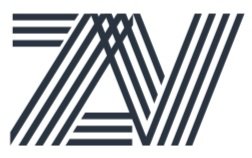gametracKr
A mobile application that empowers gamers to monitor and manage their gaming habits.
Role
UX Designer
Time
6 Months
Tools
Figma
Project Summary:
I designed a mobile application that helped gamers track and manage their gaming. The app empowers users by offering insights and analytics into their gaming behavior, encouraging healthier gaming practices.
A problem statement that evolved while exploring about microtransactions
Initially, my focus was on exploring the issues surrounding microtransactions in gaming. Because of the rise in microtransactions, I wanted to create a tool that would help gamers manage their gaming habits more easily.
-Initial Problem Statement
A Shift happened…
After research comes the realization that microtransactions was only part of the problem. Additionally, the microtransactions within gaming are designed so well that it was meant to be addicting. The users weren't just concerned about their spending habits but also are struggling to manage the time they spend gaming. The addictive design of video games made it difficult to manage their time and money.
The research led to refining the problem. Rather than focusing solely on tracking spending, the approach was shifted to helping users manage their overall behaviors towards gaming.
— Revised Problem Statement
Research
How Might We
How Might We help gamers regain control of their gaming habits
Showing the current progress through the use of graphs enables the users easily monitor their progress. Additionally, having options to be able to set goals and provide a sense of control of their time.
Core Functions
User and Stakeholder’s feedback through interviews and testing helped defined the features.
Automated Gaming Data
Users can easily track and are provided visual information about their gaming habits.
Personalization
Users are able to set maximum limits for both gaming and spending. This can help with maintaining control over their habits and develop healthier gaming routines.
Gamification
Gamification is implemented to encourage positive behaviors through rewards and incentives. The gamification features allows users to stay engage with the app and reinforces healthier gaming behaviors.
UI
The visual elements of the app are designed to evoke a sense of balance and harmony. The graphs and other elements were carefully crafted to ensure consistency and standard, while the minimalistic aesthetic eliminates unnecessary distractions, allowing users to focus on their goals and navigate the app with ease.
The visual elements of the app are designed to evoke a sense of balance and harmony. The graphs and other elements were carefully crafted to ensure consistency and standard, while the minimalistic aesthetic eliminates unnecessary distractions, allowing users to focus on their goals and navigate the app with ease.
Reward Redemption Flow
Learning Outcomes
This project has taught me the importance of conducting research to uncover underlying issues that may not always be immediately apparent. Additionally, this project has also taught me the importance of listening to the user's needs and understanding that design thinking is not a linear process.
Challenges
The challenge was shifting my focus from just a point of view of microtransactions to a more broader understanding of gaming addiction. Listening to the users and understanding their needs and pain points, required that all initial assumptions and thought process had to be recalibrated.
Since the app is monetized, during the usability testing, participants spent more time on the billing screen, as they contemplated whether the app should cost money. Further research should be conducted to address how monetization can work for both users and the organization.










